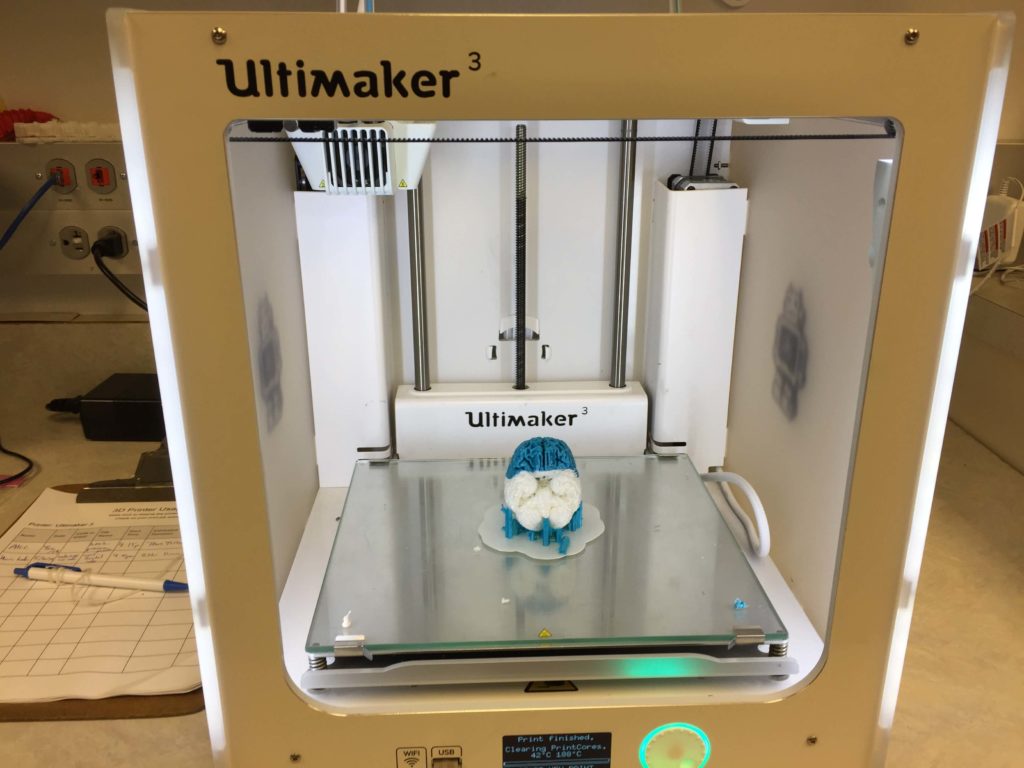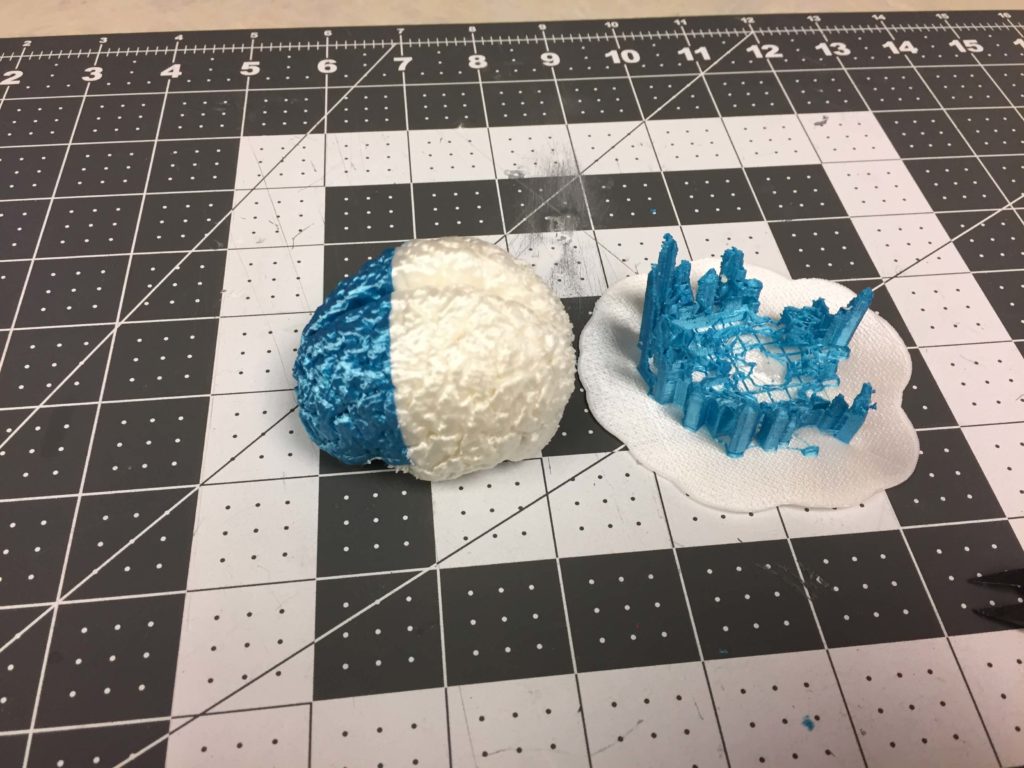
By Harsimran S. Kalsi
The human brain is arguably one of the most complex systems that humanity has ever come across. A three-pound mass of “jelly” with over 86 billion neuronal cells, all stowed away in the dark caverns of our skulls. This organ facilitates thinking, imagining, socially interacting, feeling, and so much more that can sometimes go unnoticed in our daily lives.
The intricacy and wonder of the human brain as well as its limitless potential as a target to enhance human health and wellbeing, are what drive my deep interest in the brain. I’ve long been fascinated by it ever since having first learned about Dr. David Eagleman’s work on creating new senses and Dr. Vilanyur S. Ramachandran’s and Dr. Oliver Sacks’ work on fascinating neurological cases.
Recently, I decided that I’d like to print a brain using files from the NIH 3D Print Exchange. In particular, I wanted to modify and print a file such that it highlights my favorite part of the brain–the frontal lobe. Of the four major lobes of the brain, it is the largest and is located just behind the forehead (at the front of both hemispheres). The frontal lobe is principally responsible for planning/thinking about the future, attention, motivation, and short-term memory (as well as some other features). In many ways, characteristics of our frontal lobes help define aspects of what it means to be human.
To “highlight” the frontal lobe I used the same method that I used previously to highlight distinct proteins on the surface of viruses. If you haven’t had a chance to read that post, you can find it here. In short summary, I used Meshmixer to divide the brain .stl into several distinct pieces and later merged them into specific groups, which could then be imported and manipulated in Cura (printing with an Ultimaker 3).
Overall, this process and print worked great! The prints came out fantastic and with a higher resolution of the sulci and gyri than I had initially anticipated. However, since I utilized the Meshmixer plane cut tool, the delineation of the frontal lobe from the other lobes is sometimes too sharp and a little off center. The frontal lobe is specifically separated from the parietal lobe by the Central Sulcus and separated from the temporal lobe by the lateral sulcus. This particular print does not show the frontal lobe in this much detail; however, it is a very close approximation (which appears to be off by ~1mm). Additionally, it is still useful from a “macro” educational and proof of concept perspective.


Acknowledgements:
The original .stl of the brain was obtained from the NIH 3D Print Exchange. Special thanks to Angela Vanden Elzen for her support and assistance throughout this project.
